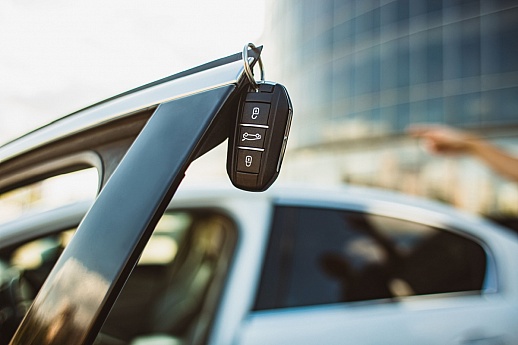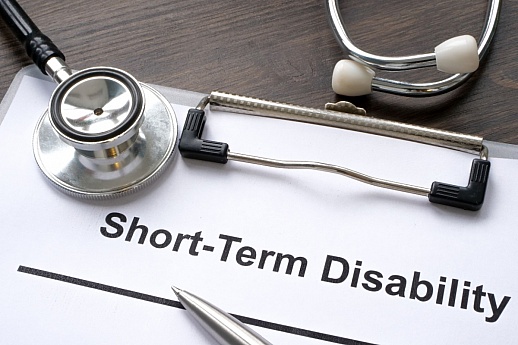How to Switch Auto Insurance in 5 Easy Steps
You know the feeling - you’re stuck in something that just isn’t working, but you don’t know how to walk away. Sound familiar? No, this isn’t about a rocky relationship. We’re talking about your car insurance. Perhaps the premium continues to rise, or the service begins to frustrate you.
It may be the right time to sever ties with your current provider and find a better match. We’ll show you exactly how to switch auto insurance. No stress, no awkward goodbye, just a smarter, smoother move. It’s easier than you think. It simply involves finding a better policy, setting your new coverage to start, and canceling your old one at the right time. Here’s how to do it step by step. But first, let’s explore in more detail why you should consider changing your auto insurance.
When Can You Switch Car Insurance?
You might be wondering when you can change your auto insurance. You're allowed to switch at any point, even before your policy ends or renews, and sometimes even if you have an open claim.
If you've paid your premium upfront, you may be eligible for a refund for the unused portion. For instance, if you cancel a six-month policy after four months, most insurers will refund the remaining two months.

However, if you pay monthly and cancel near the end of your billing cycle, a refund will likely not be applied. Some insurers also charge a cancellation fee, which could reduce your potential savings. Always review your policy details or consult with your insurer before making a switch.
Steps of Switching Car Insurance
Changing car insurance can help you save money, get better coverage, and enjoy a smoother experience, but it takes careful planning. If you believe you deserve better, the following is a step-by-step guide on how to switch auto insurance:
1. Know What You Need
Learning how to switch auto insurance effectively starts with identifying the coverage that fits your needs, budget, and risk level. Know precisely what you want from a new policy. For example, choosing less coverage may lower your monthly premiums. Still, it also exposes you to higher out-of-pocket costs if you're ever involved in an accident, a hit-and-run incident, or a theft-related incident.
Full coverage, while more expensive, offers broader protection, typically including liability, collision, and comprehensive car insurance. It's a more intelligent choice if you want help covering medical bills or repairs after a crash.
Many drivers also add uninsured motorist coverage (UM), personal injury protection (PIP), or medical payments coverage (MedPay) to their policies. Depending on where you live, these types of car insurance coverage might even be required.
When deciding how to switch auto insurance, understanding what you need makes it easier to compare policies and choose the right one for your situation.
2. Shop Around and Research
Whenever you're thinking about switching your auto insurance, get quotes from at least three companies and compare their coverage options to make an informed choice.
Most companies provide a car insurance estimator on their website, which allows you to obtain quotes automatically by entering details such as your age, vehicle model, and driving habits.
Consider the insurance companies that provide applicable discounts, such as multi-vehicle, multi-policy, homeowner, or student discounts. You may also benefit from usage-based or pay-per-mile programs if your current driving habits align with them.
Some companies can offer the coverage you need with a reasonable rate, suitable limits, and a deductible in car insurance you can afford.
While saving money might be the primary reason you want to switch auto insurance, don’t just focus on finding the cheapest premium. Research each company's reputation for customer service, efficiency in processing claims, and overall financial stability to determine where you're gaining or losing value.
3. Buy the New Policy
Once you’ve done evaluating the best car insurance companies and their offerings, the next step in switching your car insurance is purchasing your chosen policy. You’ll need to set an effective date. Ensure your new policy starts on the same day your current policy ends or one day before, to maintain continuous coverage without gaps.
Next, decide how you want to pay your premium. Some insurers let you pay in full upfront, while others offer monthly billing or split-payment options, like two, three, or four installments.
4. Cancel Your Old Policy
When learning how to switch auto insurance, timing is crucial. You must align the start date of your new policy with the day your old one ends. Canceling too early creates a coverage gap, even if it’s just for one day.
That short lapse leaves you without financial protection when accidents occur, puts you at risk of legal trouble, and may lead to higher premiums later since insurers can mark you as an uninsured driver for that time.
On the other hand, if you forget to cancel your old policy once the new one takes effect, you’ll end up with overlapping coverage. That means you’re paying for two active policies with the same coverage without gaining any additional benefits.
5. Get a New Proof of Insurance
In almost every U.S. state, you must carry valid proof of insurance to drive legally. Once you switch insurers, make sure to update your proof of insurance before your new policy takes effect.
Your new provider will likely send you an insurance ID card with essential details, including your name, vehicle information, coverage dates, and car insurance policy number.
You may receive it by mail, download a printable version, or access it through a mobile app. However, it’s best to keep a paper copy in your car so you can present it during traffic stops or accidents, even in areas with poor or no mobile data signal.
Why Switch Car Insurance Companies?
Life and circumstances change, and so do your car insurance needs. Your current policy may no longer be the right fit. Sticking with the same provider and coverage out of habit could cost you more or leave you unprotected.
Here are some common reasons why changing your car insurance makes more sense than holding onto an existing one that no longer suits you:
You’re Trying to Save Money
Car insurance premiums continue to rise, with full coverage costs projected to increase by 7.5% nationwide in 2025. This spike is driven by soaring vehicle prices, costly repairs, and a growing number of accidents linked to distracted driving.
However, not all insurers calculate rates the same way. By comparing options, you may find a more affordable premium than what you're currently paying.
Your Driving Habits Have Changed
If you used to drive two hours daily for work but now work from home, your annual mileage has likely dropped sharply. In that case, you could save more with a pay-per-mile temporary car insurance, which charges a base daily rate plus a per-mile fee.
Your Family Situation Has Changed
Life changes, such as marriage or divorce, can impact your auto insurance needs. For example, getting married may qualify you for a discount if you add your spouse to your policy and share the same address.
On the other hand, divorce often necessitates separate policies and may result in higher premiums. Either way, it’s a good opportunity to switch car insurance and find a plan that better fits your new circumstances.
“Auto insurance rates are rising nationwide, and the best strategy to save money is to shop your policy with multiple carriers.”
– Mark Friedlander, Insurance Information Institute
You’re Not Happy With Your Insurer
The J.D. Power 2024 U.S. Auto Insurance Study found that 51% of customers have little trust in their insurers. If your provider takes too long to respond, delays claim investigations, or denies a claim without justification, it may be time to move on.
As you explore how to switch auto insurance companies, check customer reviews and third-party ratings to avoid dealing with the same issues.
It’s convenient to let your car insurance renew without a second thought, but doing so might mean paying more for less. Your lifestyle, driving habits, or financial situation may have changed, but has your coverage kept up?
By regularly assessing your needs and exploring other options, you can switch to auto insurance providers and policies that align with your current circumstances and secure better deals and hidden opportunities you didn’t even know you were missing.
FAQs
Can You Switch Auto Insurance at Any Time?
Yes, you can switch your car insurance at any time. However, it’s often best to do so during policy renewal, after purchasing a new vehicle, or following significant life changes, such as moving or getting married. Timing your switch carefully helps you avoid a lapse in coverage, which is crucial for staying protected and preventing possible penalties or higher premiums.
How Long Do You Have to Change Your Car Insurance When You Move?
If you're relocating to another state and your current insurer doesn’t sell coverage there, you need to determine how to switch auto insurance. Most state Departments of Motor Vehicles (DMVs) require new residents to update their auto insurance, driver’s license, and vehicle registration within 30 to 90 days.
Do I Need to Notify My Lender if I Switch Car Insurance?
If you still have a loan on your car, canceling your old insurance will alert your lender that the vehicle is no longer insured. To maintain good standing and avoid breaching your loan agreement, ensure that you notify your lender and provide them with the updated information from your new insurance provider.



